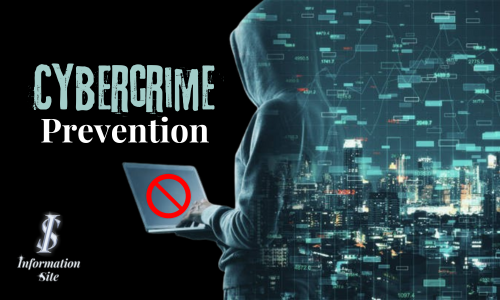Cyber scams are fraudulent activities conducted through messages and digital means, typically involving the Internet, email, or other platforms. These scams are designed to deceive individuals or businesses into giving away personal information, money, or both. Cybercriminals use various methods to trick victims, exploiting vulnerabilities in technology or manipulating human behaviour to achieve their goals. Recently a new trend has started of cyber scams.
Cyber scams through refund messages
Cyber thugs are using new methods of fraud to steal people’s hard-earned money. They have new trends for every season. Through which they are committing fraud by cheating. Now is the time for the income tax refund, so the fraudsters have made this also a weapon of fraud. They are trying to cheat the income taxpayers by promising refunds.
The last date for filing an income tax return was 31 July. Income taxpayers who have filed returns are now waiting for the refund. Cyber thugs are taking advantage of this and are sending messages on the mobile phones of income taxpayers, promising them a refund of income tax returns. These days, there is a new trend of cyber fraud in the name of income tax return refunds. One should avoid giving any reaction to such fake messages.
Complaints of cyber scams were received in many states including Rajasthan. People are receiving messages about the income tax refund. Furthermore, the Income Tax Department and Cyber Crime Control Center have issued an alert. In the advisory issued by the department, it has been said that income taxpayers should not respond to such messages.
Advice…check refund status on the official website only
Even in Hadoti (Kota, Bundi, Baran, Jhalawar), people are receiving fake messages regarding income tax return refunds. Never respond to these types of messages. Check refund status only on the official website of the income tax department. The official website of the Income Tax Department is “incometax. gov. in”.
Moreover, the Income Tax Department does not send such links to the income tax payer’s mobile for income tax return refund. The relevant information is given to the income taxpayer only on the authorized e-mail ID. Do not click on any such message or link. Get information from the official website of the Income Tax Department or contact your CA.

Types of Cyber Scams
Cyber scams are deceptive schemes carried out via digital platforms like the internet, email, or social media, to steal money, personal information, or both. They come in many forms, but some of the most common types include:
1. Phishing cyber scams:
- How it works: Cybercriminals send fraudulent emails or messages, pretending to be legitimate entities like banks or popular services. These messages often contain links or attachments that, when clicked, steal personal information or install malware.
- Example: An email from a fake “bank” asking you to verify your account details.
2. Social Engineering:
- How it works: Scammers manipulate individuals into revealing confidential information by exploiting human psychology. This can be done over the phone, through email, or through social media platforms.
- Example: A scammer pretending to be a tech support agent who convinces a person to provide access to their computer.
3. Online Shopping Scams:
- How it works: Fake websites or ads promote goods that don’t exist or never get delivered. Victims make purchases and never receive the items or get a product of significantly lower quality than advertised.
- Example: A fake online store selling discounted electronics that never arrive.
4. Tech Support Scams:
- How it works: Victims receive calls, pop-up messages, or emails claiming that their computer has a virus. The scammer offers to fix the problem remotely but instead gains access to personal data.
- Example: A pop-up warning that your computer is infected and offering a phone number to call for help.
5. Romance Cyber Scams:
- How it works: Scammers create fake profiles on dating sites or social media, then build a relationship with the victim before asking for money under false pretences.
- Example: A scammer pretends to be a love interest and asks for money to cover a fake emergency.
6. Investment Cyber Scams:
- How it works: Scammers promote fake investment opportunities, often promising high returns with little or no risk. Once victims invest, the scammer disappears with their money.
- Examples: Ponzi schemes, cryptocurrency frauds, or “get rich quick” offers.
7. Ransomware:
- How it works: Malicious software (malware) is installed on a victim’s device, locking them out of their data or systems until a ransom is paid, usually in cryptocurrency.
- Example: A file or attachment that, once opened, encrypts your files and demands a ransom to unlock them.
8. Lottery and Prize Scams:
- How it works: Scammers tell victims they’ve won a lottery or prize, but they must pay a fee or provide personal information to claim it.
- Example: An email stating you’ve won a contest you never entered, asking for bank details to transfer the “prize.”
9. Work-from-Home Scams:
- How it works: Fake job offers are advertised that require an upfront fee for training or equipment, or they lure victims into illegal activities like money laundering. Although not every work-from-home job is a scam.
- Example: A job offer that promises high pay for easy work but requires a fee to get started.

10. Impersonation Scams:
- How it works: Scammers pretend to be someone you know, such as a friend, family member, or authority figure, and ask for urgent help, often involving money.
- Example: A scammer impersonating your relative on social media, asking for money to deal with an “emergency.”
How to prevent cyber scams
To protect yourself from cyber scams, it’s essential to stay vigilant, be sceptical of unsolicited communications, and use security measures like strong passwords, two-factor authentication, and antivirus software. If something seems too good to be true, it likely is!
Preventing cyber scams requires awareness, caution, and the use of security measures.
Here are some key strategies to protect yourself:
1. Be Skeptical of Unsolicited Messages:
- Avoid Clicking Unknown Links: Do not click on links or open attachments in unsolicited emails or messages, especially from unknown senders.
- Verify the Sender: If an email or message claims to be from a legitimate organization (e.g., your bank), verify it by contacting the organization directly using official contact details.
2. Use Strong Passwords and Two-Factor Authentication (2FA):
- Create Strong, Unique Passwords: Use a combination of letters, numbers, and special characters. Moreover, avoid using easily guessable passwords like “password123.”
- Enable 2FA: Two-factor authentication adds an extra layer of security by requiring a second form of verification (e.g., a code sent to your phone) in addition to your password.
3. Keep Software and Devices Updated:
- Install Updates: Regularly update your operating system, browser, and apps. Thus ensure security patches are applied, which helps protect against vulnerabilities.
- Use Antivirus Software: Ensure you have reputable antivirus and anti-malware software installed and keep it up to date.
4. Be Cautious with Personal Information:
- Limit Sharing: Avoid sharing sensitive personal information like Social Security numbers, bank details, or passwords unless necessary.
- Watch Out for Over-Sharing: Be mindful of how much personal information you share on social media. Since scammers can use it to impersonate you or tailor attacks.
5. Verify Before You Act:
- Confirm Requests: If someone asks for money or sensitive information, even if they claim to be someone you know or a legitimate business, verify the request through a separate communication channel (e.g., calling them directly).
- Check Websites: Before making purchases or entering information online, ensure the website is legitimate. Look for “https://” in the URL and check for reviews or warnings about the site.
6. Educate Yourself About Common Cyber Scams:
- Stay Informed: Learn about common cyber scams and fraud tactics to recognize warning signs.
- Phishing Awareness: Be aware that legitimate companies usually don’t ask for sensitive information (like passwords) via email or text.
7. Secure Your Online Accounts:
- Use a Password Manager: Password managers generate and store strong, unique passwords for each of your accounts. Thus reducing the risk of reusing passwords.
- Monitor Account Activity: Regularly check your bank statements, credit card accounts, and other online accounts for suspicious activity.
8. Use Secure Networks:
- Avoid Public Wi-Fi for Sensitive Transactions: Public Wi-Fi can be insecure, so avoid accessing bank accounts or making purchases over these networks. Use a Virtual Private Network (VPN) when possible.
- Secure Your Home Network: Ensure your home Wi-Fi is encrypted with a strong password and updated security settings.
9. Be Cautious of “Too Good to Be True” Offers:
- Avoid Unrealistic Deals: If an offer seems too good to be true, it likely is. Be wary of unsolicited messages offering large sums of money, prizes, or high returns on investments.
- Check the Source: Research any “opportunities” or offers before responding to or investing in them.
10. Report cyber scams:
- Notify Authorities: If you suspect you’ve been targeted by cyber scams, report it to local law enforcement, the Federal Trade Commission (FTC), or other relevant authorities.
- Alert Companies: If cyber scams involve a specific company or platform, inform them so they can take action to prevent further incidents.
Conclusion:
Staying safe from cyber scams requires vigilance, education, and proactive measures like securing your devices, using strong authentication methods, and being cautious about sharing personal information. Trust your instincts—if something feels off, it’s better to investigate further before acting.







